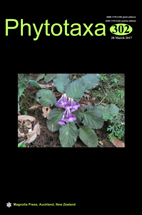Abstract
Morphological and molecular phylogenetic analyses of an entomogenous fungus associated with larvae of Lepidoptera in Guizhou and Anhui, China showed it to be a new species, Metacordyceps neogunnii. It differs from similar species in having longer asci and wider ascospores. Multigene analysis of ITS, 18S, TEF1 and RPB1 sequence data also confirmed the distinctiveness of this species. This species has been wrongly regarded in China as ‘Cordyceps gunnii’ for more than 30 years. Cordyceps gunnii from Tasmania is considered to be in the family Ophiocordycipitaceae based on its multigene phylogeny and morphological analysis.

